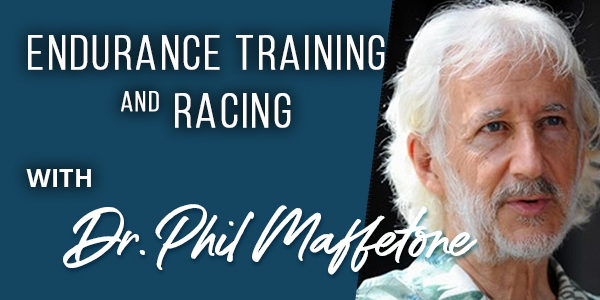
Studies show hard workouts quickly improve athletic performance, but if they come with an injury rate of 50 percent would you still do them?
There’s no question that high-intensity training can improve performance. The problem is it also raises the risk of getting hurt as the line between optimal fitness and overtraining narrows significantly with intensity. Unfortunately, too many athletes are willing to sacrifice health for more fitness. The fact is, we can have both — it’s a question of balance.
While the notion of training fast to race fast is nothing new in coaching circles, researchers have been able to demonstrate that hard, high-intensity training improves VO2max, lactate threshold, time-trial performance and other measures that may translate to more speed on race day. Studies also show that athletes can overtrain through the same mechanisms, which can result in physical, biochemical and or mental-emotional injuries that can ultimately impair performance, often more than the gains obtained in the training techniques that improved it.
Track and field athletes, and those in sports requiring similar bursts of speed, such as soccer or rugby, and in particular those requiring increased strength such as in football, have an added risk of injury. The dilemma facing professional athletes is just how much overreaching they can do to excel in their sport before risking overtraining.
Endurance athletes are different. They can excel in their sport without the extremes or frequencies of high-intensity training by improving their submax state. That is because, in part, competitive intensity is lower, with marathoners racing at around 80 percent of VO2max and Ironman athletes closer to 70 percent. The right combination of low- and high-intensity training is where this game is won, and the amount of high-intensity training necessary being quite small — two to four weeks of interval work, for example, at the end of an offseason before the onset of race season — could be ideal. This is the first of two “short” aspects of high-intensity training. Other than short interval distances, this other short phase too often turns to “long” periods of weeks that often turn to months. More is not better — the old coaching adage is speed kills.
Why do many athletes follow research reports (often second-hand reports written in sports magazines)? Most studies on short, high-intensity training have validity. But the big picture is usually not disclosed, especially by sports writers.
It is usually not the goal of researchers to establish recommendations from a particular study, yet this is the take-home message by magazine and blog writers. In addition, most research is performed on healthy individuals, typically young college kids who respond well to many kinds of exercise stress and tend to recover faster than the average age group athlete. Most studies are also relatively short and limited in what is being tested, making the results misleading. Following a training routine for three weeks, for example, such as one used in many research designs, can have a much different outcome when it is applied for three months. And more often than not, the negative, or harmful, effects of a study are not included in the published findings or never disclosed.
Such was the case of an excellent series of studies by Prof. Paul Laursen and colleagues, who demonstrated how four weeks of high-intensity interval training, performed twice per week, increased VO2max, peak cycling power, and 40 km time-trial performance in a group of highly trained cyclists. The subjects could have easily been runners, or any group of endurance athletes. What was not disclosed, because it was not part of the study design, is that about half the athletes showed serious signs of overtraining by the end of the seven-week study. “After the first week or so in the study, the guys were still smiling about being part of it, and seeing gains,” Laursen says. “But by the end of it, the look in the eyes of these guys said it all — they were not happy with me.”
Another interesting side event to come from the study was described in Bicycling Magazine. One of the 43 cyclists responded incredibly well to Laursen’s training, and went on to become a domestic professional in Australia.
This study is of interest because of what it showed, and what it didn’t. It showed short-term improved performances, raised levels of fitness, and one very high responder who went on to do great things in the sport. But it revealed nothing about the direction things appeared to be tracking in nearly all participants. It did not mention athlete health, which we know is an independent construct from fitness. This information was not part of the published research paper because it was not part of the study design — it wasn’t what the researchers were investigating.
Athletes following the protocol of this study could improve their oxygen uptake, and get faster, as all subjects in the study did, but at what price? If young, healthy athletes get hurt performing short, high-intensity training, what would happen to the average athlete, who is older, less healthy, and in many cases already injured?
It’s not unusual for sports magazines to write about study results, although these articles are usually assigned to a writer who may not have a background in exercise physiology or understand the study design. They are meant to grab readers attracted to flashy headlines (“Run your best 10K in just three weeks!”).
In a popular running magazine (Runner’s World online June 7, 2016, “How to Maximize Your Mitochondria”) the author referenced an unpublished study presented at the American College of Sports Medicine’s annual meeting. As a way to increase mitochondria, the energy powerhouses of muscle cells, by 40 percent, subjects performed short, high-intensity training twice a day, seven days a week for three weeks. Just reporting on this gives runners a reason to try it — how many injuries came from this study or from readers of the running magazine are, of course, unknown.
The British Journal of Sports Medicine published the results of a short-term training program, designed by health professionals to reduce running injuries that still resulted in a 30 percent injury rate (Taunton et al., 2013). And, the Journal of Strength and Conditioning published a study that showed the popular and notoriously high-intensity sport of CrossFit has an estimated injury rate of 73.5 percent with 7 percent of these injuries requiring surgery (Hak et al., 2013).
One thing most researchers would agree on is that we don’t really know what specific workout, if any, is best for a given athlete. While the concept of individuality is well accepted, it’s rarely applied. And as long as popular press presents tidbits of research, pretending the answer has been found, desperate athletes will blindly follow it in their search for the holy grail, only to risk increased injury and ill health.
Researchers would also agree that the human body may best benefit from a variety of activities. So avoid only training long and slow, only short, high intensity, or only running.
Beware: hidden workout secrets are a myth, but the hidden dangers are not. What you don’t know can hurt you.
References
Professor Paul Laursen, Sports Performance Research Institute New Zealand (SPRINZ), AUT University, Auckland, New Zealand, now living, coaching and consulting in Canada: www.plewsandprof.com
Laursen PB, Shing CM, Peake JM, Coombes JS, Jenkins DG. Interval training program optimization in highly trained endurance cyclists. Med Sci Sports Exerc. 2002 Nov;34(11):1801-7.
Laursen PB, Shing CM, Peake JM, Coombes JS, Jenkins DG.
Influence of high-intensity interval training on adaptations in well-trained cyclists. J Strength Cond Res. 2005 Aug;19(3):527-33.
Maffetone, P. and Laursen, P.B. Athletes: Fit But Unhealthy.
Taunton JE, Ryan MB, Clement DB, McKenzie DC, Lloyd-Smith DR, Zumbo BD. 2003. A prospective study of running injuries: the Vancouver Sun Run “In Training” clinics. Br J Sports Med.;37(3):239-44.
Hak PT, Hodzovic E, Hickey B. The nature and prevalence of injury during CrossFit training. J Strength Cond Res. 2013








